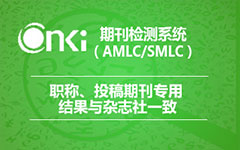从功能对等理论角度分析政府工作报告翻译的等与不等
1. Introduction
1.1 Background
With further reform and opening up, China gradually made numerous remarkable achievements. Because of increasing international influence, it plays an indispensable role in the international community and attracts the attention of people from different countries. Therefore, a growing number of foreigners expect to learn about China.
Annual GWR, political document from the government, is regarded as the most authoritative report of China’s recent conditions and development trends. It not only reviews accomplishments and drawbacks of government work of the past year, but also puts forward goals of the coming year. As the best channel for foreigners to learn about China, the translation of GWR, which appropriately conveys the information expressed in Chinese, becomes increasingly vital to the image of our nation. Hence special studies on GWR translation are really urgent and crucial.
1.2 Significance
Characterized by applied research, this thesis combines functional equivalence theory with a variety of translation examples to comprehensively study the equivalent and non-equivalent translation of GWR, which has both theoretical values and practical implications.
It draws the conclusion that the theory guiding the translation of GWR should be diversified and also sets forth several principles, like accuracy, to express the information of GWR accurately and exactly. It is conducive to China’s communication and cooperation with other countries and foreigners’ understanding of China etc.
1.3 Structure
The thesis is composed of six chapters.
Firstly, it starts with a general description of this dissertation, including background, significance etc. Nida’s functional equivalence theory is described in the second part.
Next, it gives an overview of GWR, mainly discussing its contents, structure and characteristics. The most important part is the fourth chapter, combing the features of GWR, it conducts a detailed analysis of the equivalent and non-equivalent GWR translation at lexical, syntactic and discourse levels based on functional equivalence theory.
The fifth chapter lists several principles, which to some extent, are beneficial to target readers to comprehend the translation of GWR. The last part is the conclusion of the thesis, it illustrates the summaries of previous discussions. Besides, The limitations of the research as well as some suggestions for future study are also involved. The author sincerely hopes that great significance will be attached to the study of GWR translation.
2. A Brief Introduction to Functional Equivalence Theory
Eugene A. Nida, one of the American distinguished translation theorists, introduces the term “Dynamic Equivalence” in his book The Theory and Practice of Translation(1969), in which he defines it as “in term of the degree to which the receptors of the message in the receptor language to it in substantially the same manner as the receptors in the source language” (Nida, 1964). This definition indicates that dynamic equivalence is reader-oriented. It stresses that target readers’ reactions to the translated text should be similar to native readers’ reaction to the source text and it regards this as the criterion of evaluating the translation. Therefore, when doing translation, translators should focus on the information and meaning of the source language materials. As a result, people advocate merely readers’ response, overly emphasizing the content and ignoring the form.
In order to avoid the misunderstanding and emphasize the concept of “function”, in the book From One Language to Another Language (1986), Nida replaces the“dynamic equivalence” with “functional equivalence”. Actually, they have no substantial differences. Nida thinks that “Translating consists in reproducing in the receptor language the closet natural equivalent of the source language message, first in terms of meaning and secondly in terms of style” (Nida, 2004:12). The theory emphasizes the functional equivalence of information instead of the direct formal equivalence in translation so as to keep the meaning and style of the source language functionally equivalent to those of the target language as much as possible. The functional feature of the translation depends on the balance of two relationships, namely, the relationship between the target language receptors and the target text should generally be equivalent to the relationship between the native language receptors and the native text.
As for the contradiction of “form” and “content”, the principle of functional equivalence is to achieve content equivalence at the same time form equivalence. If the two types of equivalence cannot be reached all, content equivalence should be taken into account first. Nida mentions in his book From One Language to Another(1986) that the form of the original text should be changed only in the following five cases:
(1)Literal translation leads to misunderstanding in meaning;
(2)There exists semantic gap caused by foreign terms;
(3)Equivalence of style is scarcely intelligible to the meaning;
(4)Equivalence of style leads to ambiguous meaning which does not exist in the original text;
(5)Equivalence of style violates grammar of source language and affects or distorts the harmony of the type of writing. (Nida, 2004)
The theory marks the latest achievements and development trends in translation field, which makes enormous contributions to making western and Chinese translation theories more scientific and instructing people’s translation activities.
3. An Overview of Government Work Report
3.1 A General Description of GWR
Every year, the month of March witnesses the opening of the National People’s Congress and the Chinese People’s Political Consultative Conference, in which the GWR is delivered by the Premier of Chinese government. It serves as the most authoritative and complete channel of learning China’s recent conditions and realities.
GWR that is the representative document of the government usually falls into four parts: the review and summary of the past year’s work, the major areas of the next year’s work and the self-construction of the government as well as some other contents. It is the crystallization of collective wisdom and the product of repeated discussion. In addition, it goes without saying that it contains no distortion and ambiguity, covering the aspects of politics, military etc.
3.2 Stylistic Characteristics of GWR
Stylistics is the study and analysis of texts from the perspective of linguistics. “Stylistics hasn’t gained popularity until Halliday began to apply it to translation study in the early 1960s” (Guo Huifang, 2009). Stylistics offers us the opportunity to analyze the features of GWR, which can be conducted via stylistic marks. The stylistic marks can be divided into two categories, which are “formal marks, including lexical, syntactic, rhetorical, textual markers and register marks, and non-formal marks, including theme, tone etc” (Liu Shoubing, 2003).
The following part states the characteristics of GWR at lexical, syntactic and rhetorical levels respectively, which belong to the category of the formal marks.


